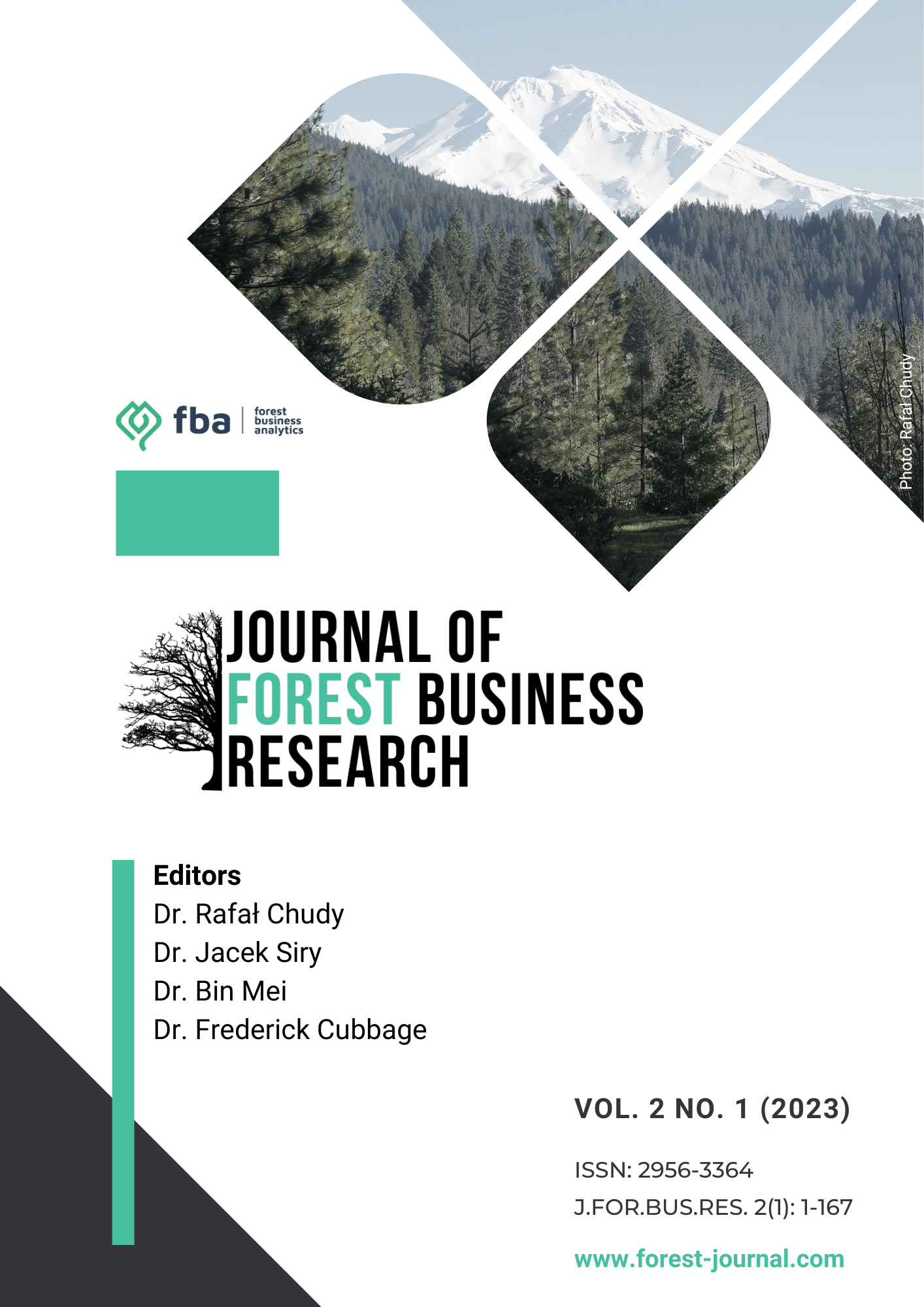Carbon additionality: an illustration by southern pine plantations
Main Article Content
Keywords
carbon trading, climate chagne, forest-based climate solution, public good, timberland investment
Abstract
Forests not only produce fiber but also sequester atmospheric carbon, which offers a nature-based solution to global warming. To internalize the externality of forest carbon, additionality must be defined and quantified. This study applies the discounted cash flow approach to price forest carbon additionality. A carbon credit is derived from the annual marginal forest growth, while a carbon release penalty is triggered by a harvest based on biomass removal. The business-as-usual is defined by the Faustmann rotation, in which the profit from timber production from perpetual rotations is maximized. Accordingly, additionality is defined by the net present value of the extra carbon sequestration beyond the baseline on a perpetual basis. It is discovered that a higher planting density on a better quality site combined with no thinning provides a more cost-effective means for a southern pine plantation to sequester additional carbon. It is also found that a shorter carbon contract is more cost-effective in achieving additionality despite a lower total carbon benefit.
References
Donofrio S, Maguire P, Myers K, Daley C, Lin K. 2021. State of the Voluntary Carbon Markets 2021. Forest Trends & Ecosystem Marketplace. 40.
Faustmann M. 1995. Calculation of the value of which forest land and immature stands possess for forestry (Originally published in German Journal of Forest Research in 1849). J. For. Econ. 1(1):7-44.
Chhetri SG, Gordon J, Munn I, Henderson J. 2019. Comparison of the timber management expenses of non-industrial private forest landowners in Mississippi, United States: Results from 1995-1997 and 2015. Environments 6(9):107. https://doi.org/10.3390/environments6090107
Li Y. 2018. A comparative overview of current-use valuation of forests for property-tax purposes in the US South. J. For. 117(1):46-54.
https://doi.org/10.1093/jofore/fvy069
Mason CF, Plantinga AJ. 2013. The additionality problem with offsets: Optimal contracts for carbon sequestration in forests. J. Environ. Econ. Manag. 66(1):1-14. https://doi.org/10.1016/j.jeem.2013.02.003
Mei B. 2023. Carbon offset as another driver of timberland investment returns in the United States. Journal of Forest Business Research 2(1):1-19. https://doi.org/10.62320/jfbr.v2i1.20
PMRC. 2023. Plantation Management Research Cooperative: https://https://pmrc.uga.edu/simulator. Last accessed February 24, 2023.
Sun C, Mei B, Li Y. 2022. Optimal contract arrangements for conservation on working forests. Natural Resour. Model. 35(4):e12351.
https://doi.org/10.1111/nrm.12351
Tahvonen O, Rautiainen A. 2017. Economics of forest carbon storage and the additionality principle. Resource and Energy Economics 50:124-134. https://doi.org/10.1016/j.reseneeco.2017.07.001
TMS. 2023. TimberMart-South: https://http://www.timbermart-south.com/. Last accessed February 24, 2023.
Zhao D, Kane M, Teskey R, Markewitz D. 2016. Modeling aboveground biomass components and volume-to-weight conversion ratios for loblolly pine trees. For. Sci. 62(5):463-473. https://doi.org/10.5849/forsci.15-129






